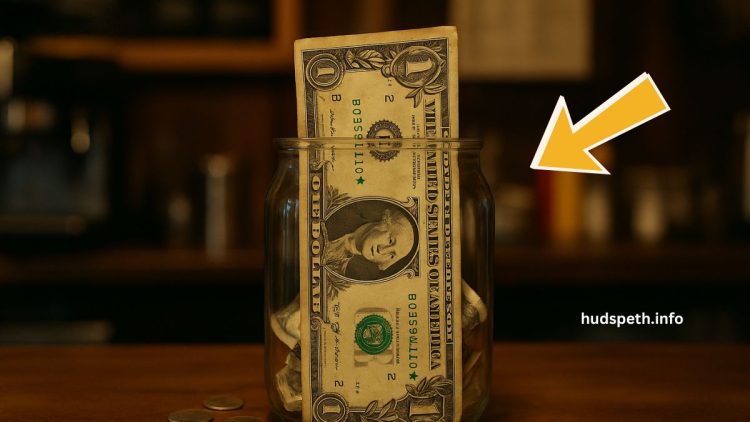In a surprising twist of fate, a routine shift at a local restaurant turned into a once-in-a-lifetime discovery. A $1 Star Note—a type of U.S. currency that looks like any other dollar bill but contains a tiny star in the serial number—was found in an old tip jar. What seemed like a regular piece of currency turned out to be a collector’s dream, later valued at an incredible $48,000.
This story has sparked curiosity among collectors and casual spenders alike, prompting many to take a second look at the money in their wallets.
What Is a Star Note?
A Star Note is issued by the U.S. Bureau of Engraving and Printing to replace a misprinted or damaged banknote during the printing process. Rather than reprinting the same serial number, a new note is produced with a unique serial number ending in a star (★). This makes it distinct and collectible, especially if it belongs to a rare batch or print run.
Why Was This $1 Star Note So Valuable?
The particular $1 bill found in the restaurant tip jar turned out to be from a rare printing series with unique characteristics that sent its value skyrocketing. Here are the main reasons:
- Series Year: It was a 2013 Series B note, one of the most sought-after years due to a duplication error.
- Printing Location Confusion: Two separate batches with the same serial numbers were printed—one in New York and one in Washington, D.C.
- Low Serial Number Range: The note belonged to a limited batch that had extremely low circulation.
- Condition: The bill was almost uncirculated, crisp, and well-preserved despite being in a tip jar.
These combined traits made this Star Note a true collector’s gem.
Value Breakdown of Star Notes
To understand what makes some Star Notes worth more than others, here’s a comparative table:
| Feature | Impact on Value | This $1 Note |
|---|---|---|
| Series Year | Rare years increase value | 2013 (highly collectible) |
| Serial Number Format | Lower numbers, patterns boost value | Low number with star |
| Print Run Rarity | Smaller batches are more valuable | Duplicated serial batch |
| Federal Reserve Bank Code | Some banks print rarer batches | New York (Code B) |
| Condition (Grade) | Crisp, uncirculated fetch higher $$ | Near-uncirculated |
| Estimated Market Value | Based on rarity and demand | $48,000 |
How Do You Spot a Star Note?
It’s easier than you think to check if your dollar bill might be worth thousands:
- Look at the Serial Number: If there’s a star at the end, it’s a Star Note.
- Check the Series Year: Found near the portrait on the note. Rare years like 2013 can boost value.
- Check the Federal Reserve Code: Each bill has a letter that identifies where it was printed.
- Examine the Condition: Crisper bills are more valuable.
- Search Serial Number Ranges: Certain number ranges are especially valuable.
Growing Interest in Paper Currency
The discovery has reignited interest in paper currency collecting, also known as notaphily. With inflation-resistant value and historical significance, currency collecting is no longer just a hobby—it’s an investment opportunity. The story of this $1 note has inspired people across the U.S. to start digging through their drawers, wallets, and yes—even tip jars.
The discovery of a $1 Star Note in a restaurant tip jar valued at $48,000 proves that hidden treasures might be much closer than we think. Whether you’re a casual collector or someone who’s never thought twice about cash in hand, it might be time to look through your change a little more carefully. That small star could be your ticket to a life-changing payday.
FAQs
What makes Star Notes valuable to collectors?
Star Notes are replacement bills and are produced in limited quantities. If the serial number, print run, or series year is rare, their value can significantly increase.
Can a circulated Star Note still be valuable?
Yes, but the condition does impact value. Uncirculated or crisp bills are usually worth more, but rare serial numbers can still command high prices.
Are all Star Notes rare?
No. Some are printed in large batches and hold minimal extra value unless tied to a specific error or series. Only rare print runs, specific serial ranges, or known printing mistakes significantly increase value.

